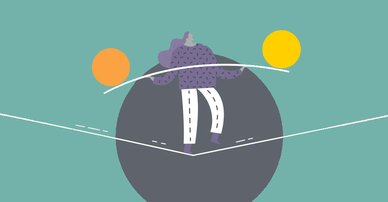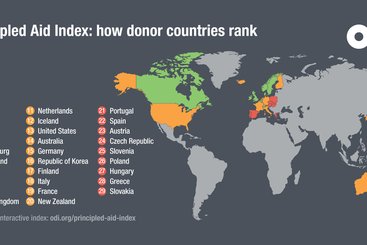
What is principled aid?
Principled aid is a way of exhibiting smart development power in a world filled with crises and uncertainties. It cannot be taken for granted when the goal of winning allies, defending democracy and safeguarding supply chains is increasingly ensnaring development cooperation.
The Principled Aid Index measures countries’ commitment to advancing their long-term enlightened self-interest. A high rank indicates that a country recognises how its own interests in global stability, prosperity and resilience are tied to the success and wellbeing of other nations.
About the 2023 Index
Due to data lags, the 2023 Index captures allocations recorded in 2021, the most recent year for which there is confirmed data. This means it captures allocations made during the acute phase of Covid-19 and does not include donor responses to the Ukraine conflict.
As indicators are calculated as shares of official development assistance (ODA), a country with low ODA has as much a chance of being principled as a high ODA-spending country. This makes the Index agnostic to ODA measurement changes, which some suggest risk overstating the proportion of loans counted as ODA.
Read more about the changes to indicators in the 2023 update.
Download the 2023 Principled Aid Index data.
Key trends
- Wealthy countries noticeably increased their “principled” aid spending during the Covid pandemic.
- This was largely driven by increases in social spending to countries in serious financial distress, greater investment in controlling communicable diseases and less aid allocated for geostrategic reasons.
- Sweden is the most principled aid spender, topping the rankings for the first time. Ireland drops to second.
- Higher ranked donors' scores have declined relative to lower ranked, newer DAC members. Greece and Slovenia – the two bottom-ranked countries – made dramatic improvements.

In a weaponised world, smart development power is not dead
2020 resources
2019 resources

